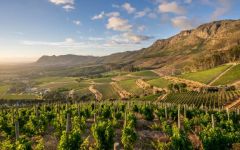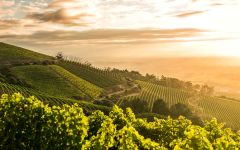Klein Constantia Estate Red Blend 2016
-
James
Suckling



Product Details
Your Rating
Somm Note
Winemaker Notes
Blend: 40% Cabernet Sauvignon, 25% Malbec, 19% Shiraz, 16% Petit Verdot
Professional Ratings
-
James Suckling
This is a wonderfully crafted and polished red with intense tannins that are creamy and lightly chewy. Full-bodied with lots of currant and berry character, complemented with hazelnuts, smoke and black tea. A blend of 40% cabernet sauvignon, 25% malbec, 19% shiraz and 16% petit verdot. Needs two or three years to come completely together. Better after 2022.
Other Vintages
2018-
Wine
Spectator
-
James
Suckling
-
James
Suckling -
Robert
Parker -
Wine
Spectator
-
James
Suckling - Decanter
-
Wine
Spectator
-
Wine
Spectator







Described as one of the world’s most beautiful vineyards, Klein Constantia is set amidst ancient trees and lush greenery on the upper foothills of the Constantiaberg, with superb views across the Constantia Valley and False Bay.
The HECTARE WINE ESTATE originally formed part of "Constantia", a vast property established in 1685 by Simon van der Stel, the first governor of the Cape. This particular valley was chosen not only for its beauty, but also for the decomposed granite soils on its slopes, gently cooled by ocean breezes.
Prized by leaders and aristocracy throughout 18th Century Europe, Constantia’s Vin de Constance was revived by Klein Constantia in 1986, reaffirming this unique natural sweet wine’s place in history.
Today, Klein Constantia continues to make some of South Africa’s top wines and the world’s best dessert wine; wines that reflect the cool Constantia climate, as well as their historic tradition.

One of the world’s most classic and popular styles of red wine, Bordeaux-inspired blends have spread from their homeland in France to nearly every corner of the New World. Typically based on either Cabernet Sauvignon or Merlot and supported by Cabernet Franc, Malbec and Petit Verdot, the best of these are densely hued, fragrant, full of fruit and boast a structure that begs for cellar time. Somm Secret—Blends from Bordeaux are generally earthier compared to those from the New World, which tend to be fruit-dominant.

With an important wine renaissance in full swing, impressive red and white bargains abound in South Africa. The country has a particularly long and rich history with winemaking, especially considering its status as part of the “New World.” In the mid-17th century, the lusciously sweet dessert wines of Constantia were highly prized by the European aristocracy. Since then, the South African wine industry has experienced some setbacks due to the phylloxera infestation of the late 1800s and political difficulties throughout the following century.
Today, however, South Africa is increasingly responsible for high-demand, high-quality wines—a blessing to put the country back on the international wine map. Wine production is mainly situated around Cape Town, where the climate is generally warm to hot. But the Benguela Current from Antarctica provides brisk ocean breezes necessary for steady ripening of grapes. Similarly, cooler, high-elevation vineyard sites throughout South Africa offer similar, favorable growing conditions.
South Africa’s wine zones are divided into region, then smaller districts and finally wards, but the country’s wine styles are differentiated more by grape variety than by region. Pinotage, a cross between Pinot Noir and Cinsault, is the country’s “signature” grape, responsible for red-fruit-driven, spicy, earthy reds. When Pinotage is blended with other red varieties, like Cabernet Sauvignon, Merlot, Syrah or Pinot Noir (all commonly vinified alone as well), it is often labeled as a “Cape Blend.” Chenin Blanc (locally known as “Steen”) dominates white wine production, with Chardonnay and Sauvignon Blanc following close behind.
